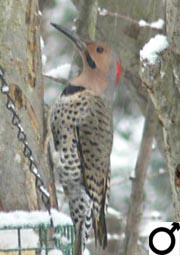
Northern
Flicker (Colaptes auratus): Female colored similarly but
without the black Fu Manchu moustache. Flight feather shafts
are yellow. Western race has red shafted flight feathers.
Photo by June Tveekrem
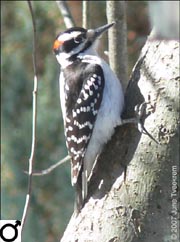
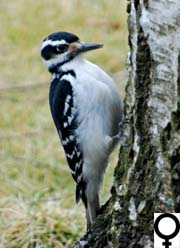
Hairy
Woodpecker (Picoides pubescens): Similar to the Downy
Woodpecker (See this page) but much larger with a longer
beak. Male photo by June Tveekrem. Female photo by Anita
Mueller.
|
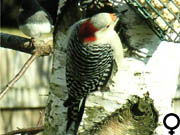
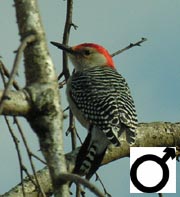
Red Bellied
Woodpecker (Melanerpes carolinus): Grows to 9 inches.
As seen here, the male has much more red on his head. Photo
by Anita Mueller.
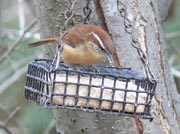
Carolina
Wren(Thryothorus ludovicianus): Rufous upper parts,
lighter orange below, white stripe above eye. Common
throughout the region. Photo by June Tveekrem
|
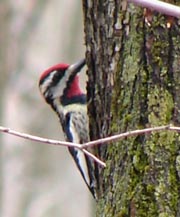
Yellow-bellied Sapsucker (Sphyrapicus varius): 8 inches. Drills rows of holes and
laps the sap and insects it attracts from them. Location:
Quehanna Tr, PA. Photo by Pat Roberts.
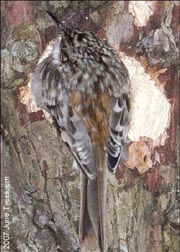
Brown Creeper
(Certhia americana): White belly, brown with buff stripes
above. Found mostly in the mountains of the region. Photo by
June Tveekrem
|
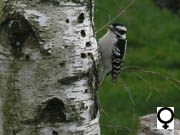
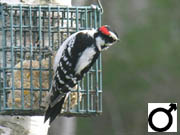
Downy
Woodpecker (Picoides pubescens): Similar in
coloration to the Hairy Woodpecker but much smaller (6.5
inches VS.9 inches) and with a much smaller beak. Female
shown in top photo. Male (bottom photo) has a red spot on
the back of his head. Photo by Anita Mueller.
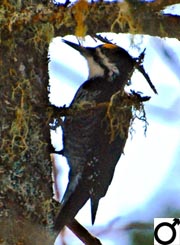
Black-backed Woodpecker (Picoides
arcticus):
A northern bird known to migrate into our region in search
of food in the winter. It feeds almost exclusively on
insects found in burned trees. Males have a distinctive
yellow cap on its forehead. Females similarly colored but
lacking the yellow cap. Photo by Anita Mueller.
|
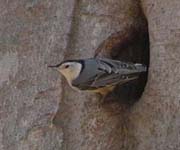
White-Breasted Nuthatch - male (Sitta corolinensis):
6 inches. Feeds by hopping along tree
trunks and branches often hanging upside down . This one is
nesting in a cavity in a Beech Tree. Prefers lowland areas,
deciduous forests. Location: Jug Bay/Patuxent
River Park, MD. Photo by Sue Muller.
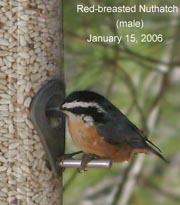
Red-breasted Nuthatch (Sitta canadensis): Much smaller than
its white breasted cousin above. Prefers the evergreens of
mountain regions. Photo by June Tveekrem
|

